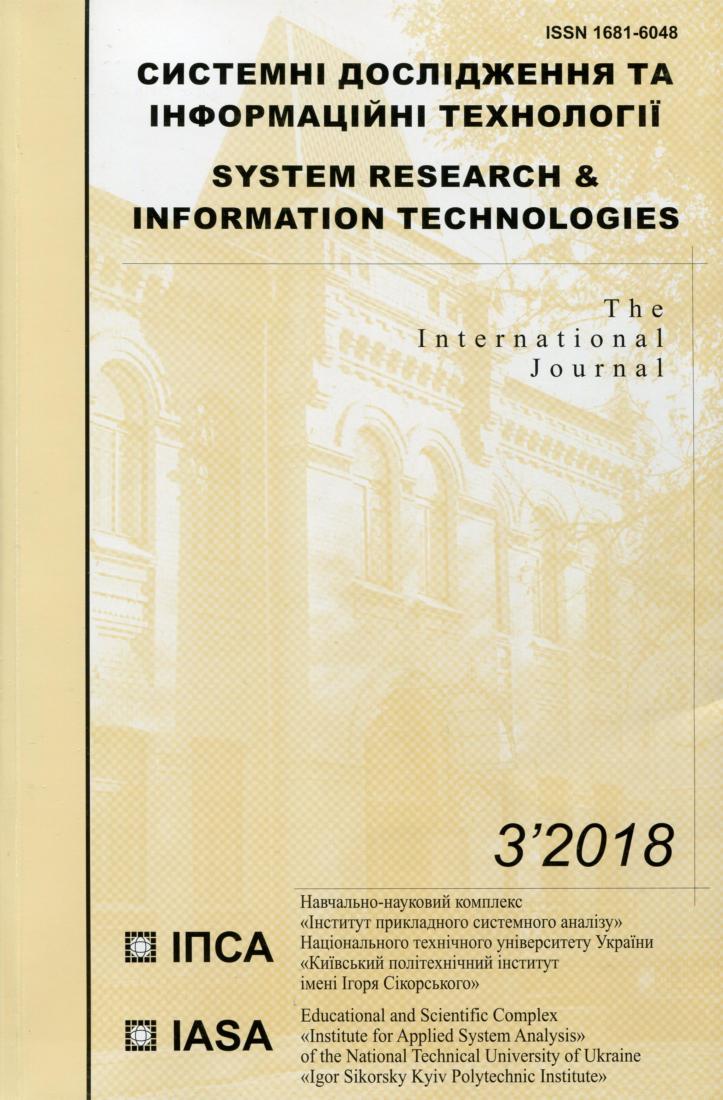Computing Lyapunov dimension and applying it for geomagnetic indices prediction
DOI:
https://doi.org/10.20535/SRIT.2308-8893.2018.3.11Keywords:
dynamical system, Lyapunov dimension, manifold, distribution, Lyapunov exponents, geomagnetic indicesAbstract
A method for computing the Lyapunov dimension from the realization of one variable of a dynamical system is proposed. The equality of the information dimension, the Lyapunov dimension, and capacity dimension is noted. The entropy of the distribution of the norms of the tangent vectors of a dynamical system and the Lyapunov dimension are considered together. Theoretical calculations are accompanied by an example of a numerical calculation of the Lyapunov dimension and the mentioned entropy for time series of geomagnetic Kp, Dst, and AE indices. In the considered indices, the entropy is close to the maximum value, and this leads to the closeness of the Lyapunov dimension to the capacity. A variable structure of the Dst index is noted. Using the example of geomagnetic indices, it is confirmed that the Grassberger-Procaccia correlation dimension is smaller than the Lyapunov dimension.References
Anischenko V.S. Lektsii po nelinejnoj dinamike / V.S. Anischenko, T.E. Vadivasova. — M.: In-t komp'jut. issledovanij, 2011. — 516 s.
Mun F. Haoticheskie kolebanija: Vodnyj kurs dlja nauchnyh rabotnikov i inzhenerov / Per. s angl. — M.: Mir, 1990. — 312 s.
Farmer J.D. The dimension of chaotic attractors / J.D. Farmer, E. Ott, J.A. Yorke // Physica 7D. — 1983. — P. 153–180.
Frederickson P. The Liapunov Dimension of Strange Attractors / P. Frederickson, J.L. Kaplan, E.D. Yorke, J.A. Yorke // Journal of differential equations. — 49. — 1983. — P. 185–207.
Arnold V.I. Geometrical methods in the theory of ordinary differential equations / V.I. Arnold. — New York: Springer, 2011. — 351 p.
Ivanov S.M. Vyjavlennja ekstremal'nykh vlastyvostej lokal'no dyfeomorfnykh system / S.M. Ivanov // Visn. Kyyiv. un-tu. Serija. Fizyko- matematychni nauky. — 2017. — №4. — S. 83–86.
Ivanov S.M. Prohnozuvannja heomahnitnoho Kr indeksu za dopomohoju dyskretnoyi bilinijnoyi modeli / S.M. Ivanov, V.O. Jatsenko // Visn. Kyyiv. un-tu. — Serija. Fizyko-matematychni nauky. — 2016. — №3. — S. 65–68.
Grassberger P. Characterization of strange attractors / P. Grassberger, I. Procaccia // Phys. Rev. Lett. — 1983. — 50. — P. 346–349.
Sano M. Measurement of Lyapunov spectrum from a chaotic time series / M. Sano, Y. Sawada // Phys. Rev. Lett. — 1985. — N 55. — P. 1082–1085.
Renyi A. On measures of entropy and information / A. Renyi // In Proc. of the 4th Berkeley Symp. on Math. Statistics and Prob. — Univ. of Calif. Press, 1961. — Vol. 1. — P. 547–561.
Ivanov S.M. Dekompozytsija eksponent Ljapunova khaotychnykh dynamichnykh system / S.M. Ivanov // Dynam. syst. model. and stab. investig.: inter. conf., 24–26 May 2017, Kyiv, Ukraine: abstracts. — Kyiv, 2017. — P. 87.
Andreev G.N. Tenzornoe ischislenie: ucheb. posobie / G.I. Andreev. — M.: MGIU, 2008. — 184 s.
Takens F. Detecting strange attractors in turbulence / F. Takens // Dynamical Systems and Turbulence. Lecture Notes in Mathematics. — 1981. — N 989. — P. 366–381.
GSFC/SPDF OMNIWeb [Digital source]. — Available at: http://omniweb.gsfc.nasa.gov/

